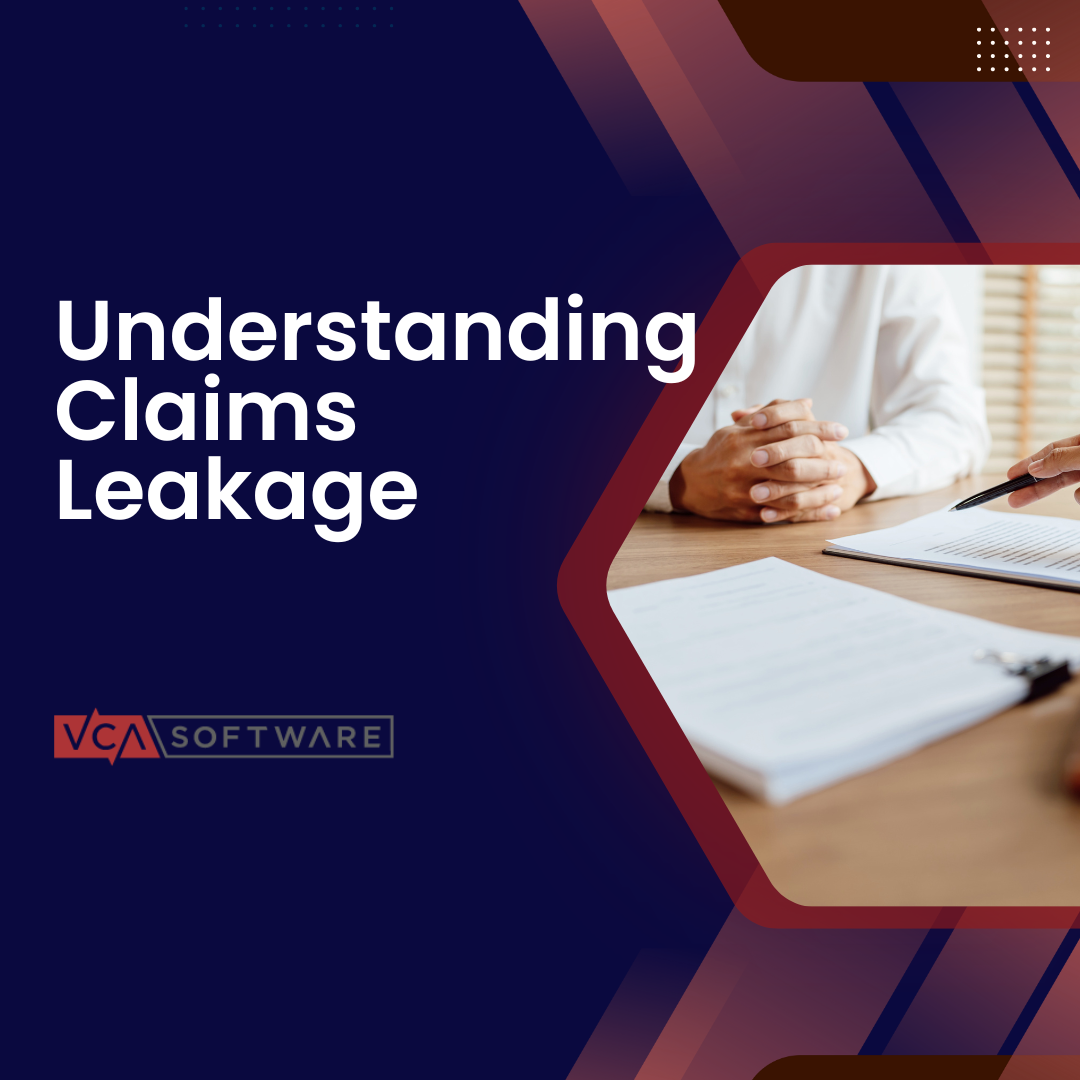Insurance claims processing has changed dramatically over the past decade. Paper files and manual processes are giving way to digital systems that connect every part of the claims journey. But what exactly is an Integrated Claims Management System (ICMS), and why should insurance professionals care?
An ICMS brings together all aspects of claims handling—from first notice of loss to settlement—into one cohesive platform. Unlike traditional systems where data sits in separate silos, an ICMS creates a single source of truth. It connects adjusters, claimants, vendors, and managers through shared workflows and real-time information.
By the end of this article, you’ll understand what makes these systems tick, how they’re transforming insurance operations, and what to look for when considering one for your organization.
The Growing Need for Integrated Claims Solutions
Insurance claims departments face mounting pressure from all sides. Customers expect Amazon-like experiences with instant updates and digital convenience. Regulators demand more detailed documentation and faster compliance. And executives want to see improved loss ratios and operational efficiency.
Traditional claims systems simply can’t keep up. When information lives in separate databases, spreadsheets, and email threads, problems multiply:
- Adjusters waste hours searching for information
- Customers get frustrated by repetitive questions
- Managers lack visibility into bottlenecks
- Fraud detection becomes more difficult
- Compliance risks increase
The numbers tell the story: According to a recent McKinsey study, insurers using integrated claims platforms reduce processing costs by up to 30% while improving customer satisfaction scores by 20%. That’s why 87% of insurance executives now rank claims technology modernization as a top priority.
Core Components of Modern Claims Systems
A truly integrated claims management system connects several critical functions:
First Notice of Loss (FNOL)
Modern ICMS platforms capture claims through multiple channels—web forms, mobile apps, call center inputs, or even IoT devices. The system immediately validates policy information, assigns the claim to the right adjuster or team, and triggers appropriate workflows based on claim characteristics.
Workflow Automation
This is where ICMS platforms really shine. They use rules engines to route claims, assign tasks, send notifications, and escalate issues automatically. For example, a high-value property claim might trigger immediate assignment to a senior adjuster, while a simple auto glass claim could be fast-tracked for straight-through processing.
Self-Service Portals
Claimants, agents, and service providers each get their own secure access points to the system. Policyholders can check claim status, upload documents, and communicate with adjusters. Agents can monitor their book of business. And vendors can receive assignments and submit invoices directly.
Document Management
All claim-related documents—photos, estimates, medical records, correspondence—live in a central repository with version control and search capabilities. This eliminates the “where’s that file?” problem that plagues traditional systems.
Communication Hub
The best systems centralize all claim-related communications. Emails, text messages, phone call notes, and internal comments are captured in a chronological timeline, creating a complete audit trail for each claim.
Analytics and Reporting
Real-time dashboards show claim volumes, cycle times, reserve accuracy, and other KPIs. Advanced systems include predictive analytics for fraud detection, severity estimation, and litigation potential.
Integration Capabilities
No claims system exists in isolation. Modern ICMS platforms connect with policy administration systems, payment platforms, third-party data sources, and external partners through APIs and pre-built connectors.
System Architecture: Cloud vs. On-Premise
Claims systems come in several deployment models:
Cloud-based (SaaS) solutions like VCA Software offer quick implementation, automatic updates, and subscription-based pricing. They’re particularly popular with mid-sized insurers and TPAs who want modern capabilities without heavy IT investment.
On-premise systems give larger insurers more control over data and customization but require significant infrastructure and maintenance resources.
Hybrid approaches combine cloud accessibility with on-premise data storage for organizations with specific security or compliance requirements.
Most new implementations lean toward cloud solutions for their scalability and lower upfront costs. The ability to add users and features as needed makes cloud platforms especially valuable during catastrophe events when claim volumes spike.
Business Benefits: The ROI of Modern Claims Technology
Organizations implementing integrated claims systems typically see improvements across multiple dimensions:
Faster Claim Resolution
- 20-40% reduction in overall cycle time
- Elimination of handoff delays between departments
- Automated simple claims processing
Cost Reduction
- 15-30% lower administrative expenses
- Reduced need for manual data entry
- Better allocation of adjuster resources based on claim complexity
Improved Accuracy
- More consistent reserve setting
- Fewer payment errors
- Better fraud detection through pattern recognition
Improved Customer Experience
- Real-time claim status visibility
- Fewer redundant information requests
- Faster payments
Better Decision Making
- Data-driven insights into claim trends
- Early identification of problematic claims
- More accurate loss forecasting
One regional insurer reported that after implementing an integrated claims platform, they processed 35% more claims with the same staff while improving customer satisfaction scores by 18 points.
Selecting the Right Claims Management System

Finding the right ICMS requires careful evaluation of your organization’s specific needs. Here are key considerations:
Scalability: Can the system handle your current and future claim volumes? Will it perform during catastrophic events?
Configurability: How easily can you modify workflows, forms, and business rules without vendor assistance?
User Experience: Is the interface intuitive for adjusters, managers, and other stakeholders? How steep is the learning curve?
Mobile Capabilities: Can adjusters and claimants access the system effectively from smartphones and tablets?
Integration: Does the system connect easily with your policy admin system, payment platforms, and third-party services?
Analytics: What reporting tools are included? Does the system offer predictive analytics or just historical reporting?
Security: How does the vendor protect sensitive data? Do they meet industry standards for data protection?
Support: What level of implementation assistance, training, and ongoing support does the vendor provide?
When evaluating vendors, request demonstrations using your actual claim scenarios rather than generic demos. This gives you a better sense of how the system would work in your environment.
Leading Vendors in the Claims Management Space
The claims management software market includes vendors of various sizes and specializations:
Enterprise Solutions
- Guidewire ClaimCenter: Comprehensive platform for large P&C insurers
- Duck Creek Claims: Highly configurable system with strong integration capabilities
- Fineos Claims: Specializes in life, accident, and health insurance
Mid-Market Platforms
- VCA claims management software: Cloud-based solution with strong automation features and user-friendly interface (Also serves as a specialty provider for Lloyd’s market claims.)
- Origami Risk: Flexible system popular with TPAs and self-insured organizations
- ClaimCenter: Configurable platform with strong document management
Specialty Providers
- MedinyX: Focused on medical claims processing
- Snapsheet: Specializes in virtual auto claims handling
- Five Sigma: AI-driven claims management for property and casualty
Each vendor has different strengths. Some excel at specific lines of business, while others offer broader capabilities across multiple insurance types. Pricing models also vary significantly, from per-user licensing to transaction-based fees.
Real-World Implementation Success Stories
Regional Auto Insurer Transforms Claims Operations
A mid-sized auto insurer struggled with long cycle times and inconsistent customer experiences. After implementing VCA Software’s integrated claims platform, they achieved:
- 42% reduction in claim cycle time
- 28% decrease in loss adjustment expenses
- 22% improvement in customer satisfaction scores
- 15% reduction in litigation rates
Key to their success was the system’s ability to automatically triage claims based on severity indicators and route them to appropriate handling tracks.
TPA Scales Operations Without Adding Staff
A third-party administrator handling workers’ compensation claims needed to grow without proportionally increasing headcount. Their integrated claims system implementation resulted in:
- 35% increase in claims handled per adjuster
- 60% reduction in payment processing time
- 25% decrease in claim reopening rates
- Ability to take on three new clients without adding staff
The automated workflow capabilities allowed them to standardize best practices across all client programs while still maintaining client-specific rules and requirements.
Implementation Best Practices
Successful ICMS implementations typically follow these steps:
- Assessment and Planning
- Document current workflows and pain points
- Define clear objectives and success metrics
- Identify integration requirements with existing systems
- Create a realistic timeline with milestones
- Data Migration Strategy
- Determine what historical data to migrate
- Clean and standardize data before migration
- Test migration processes thoroughly
- Plan for parallel operations during transition
- Configuration and Customization
- Configure workflows to match your business processes
- Set up user roles and permissions
- Customize forms and correspondence templates
- Establish business rules for automation
- Testing
- Conduct thorough user acceptance testing
- Test integration points with other systems
- Perform load testing to ensure performance
- Validate reporting and analytics functionality
- Training and Change Management
- Develop role-specific training materials
- Identify and train super-users who can support others
- Communicate benefits to build buy-in
- Provide ongoing support during the transition
- Go-Live and Optimization
- Consider a phased rollout by claim type or region
- Monitor system performance closely
- Gather user feedback for improvements
- Continuously refine workflows and rules
The most common implementation pitfalls include underestimating data migration complexity, insufficient testing, inadequate training, and trying to change too much at once. Working with experienced implementation partners can help avoid these issues.
Emerging Trends in Claims Technology
The claims technology landscape continues to evolve rapidly. Here are key trends to watch:
Artificial Intelligence and Machine Learning AI is transforming claims in multiple ways:
- Automated damage assessment from photos
- Natural language processing for faster FNOL
- Predictive models for fraud detection and litigation potential
- Smart assignment of claims based on adjuster performance data
Connected Claims Ecosystems Modern systems are becoming more interconnected:
- Direct integration with repair networks and healthcare providers
- Real-time data exchange with IoT devices and telematics
- Automated ordering of services like rentals or temporary housing
- Digital payment networks for instant settlements
Low-Code/No-Code Configuration Business users can increasingly make system changes without IT support:
- Drag-and-drop workflow designers
- Visual form builders
- Business rule configuration tools
- Report and dashboard creators
Composable Architecture Rather than monolithic systems, many insurers are moving toward modular approaches:
- Best-of-breed components connected through APIs
- Microservices architecture for greater flexibility
- Ability to swap out individual components as needs change
Frequently Asked Questions
How long does a typical ICMS implementation take? Implementation timelines vary based on complexity, but most mid-sized insurers can expect 4-8 months from contract signing to go-live. Cloud-based systems like VCA Software typically implement faster than on-premise solutions.
Can these systems integrate with our legacy policy admin system? Most modern claims platforms offer API-based integration with legacy systems. The ease of integration depends on the age and architecture of your existing systems. Vendors should be able to provide examples of similar integrations they’ve completed.
How secure are cloud-based claims systems? Leading cloud providers now offer security that often exceeds what most insurers can achieve in-house. Look for vendors with SOC 2 compliance, encryption for data in transit and at rest, regular penetration testing, and robust access controls.
Are these systems suitable for smaller insurers? Yes, cloud-based claims systems have made advanced capabilities accessible to insurers of all sizes. Many vendors offer scaled pricing based on claim volume, making them affordable for smaller organizations.
Conclusion
An integrated claims management system is no longer a luxury—it’s essential for insurers who want to remain competitive in a rapidly changing market. The right system can transform claims from a cost center to a strategic advantage, improving customer satisfaction while reducing expenses.
When evaluating options, focus on finding a system that fits your specific business needs rather than one with the longest feature list. Consider factors like ease of use, configurability, and vendor support alongside technical capabilities.
For mid-sized insurers, IAs, and TPAs looking for a balance of powerful features and implementation simplicity, cloud-based platforms like VCA Software offer a compelling option. Their combination of automation tools, intuitive interfaces, and flexible configuration makes them particularly well-suited for organizations seeking operational efficiency without massive IT investments.
Whatever solution you choose, the move toward integrated claims management represents one of the most impactful technology investments an insurer can make—with benefits that extend from the back office to the customer experience.
|
Rob Ogle is a Customer Success executive with 20+ years of experience in insurance and SaaS. He’s built and led high-performing success, support, and sales teams at multiple software companies, driving retention, growth, and customer satisfaction. Rob specializes in scaling success programs, aligning customer outcomes with business goals, and leading cross-functional initiatives in dynamic, high-growth environments. |

 Rob Ogle
Rob Ogle



